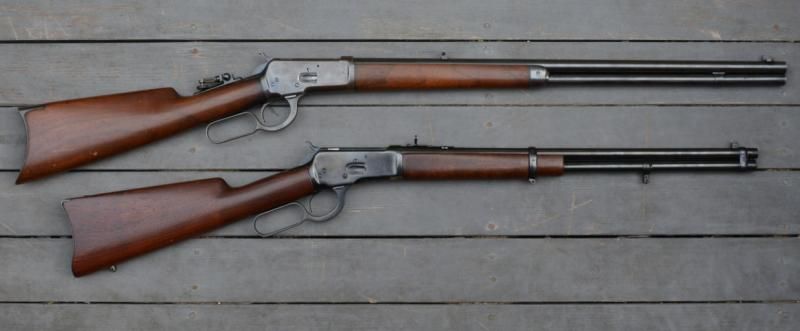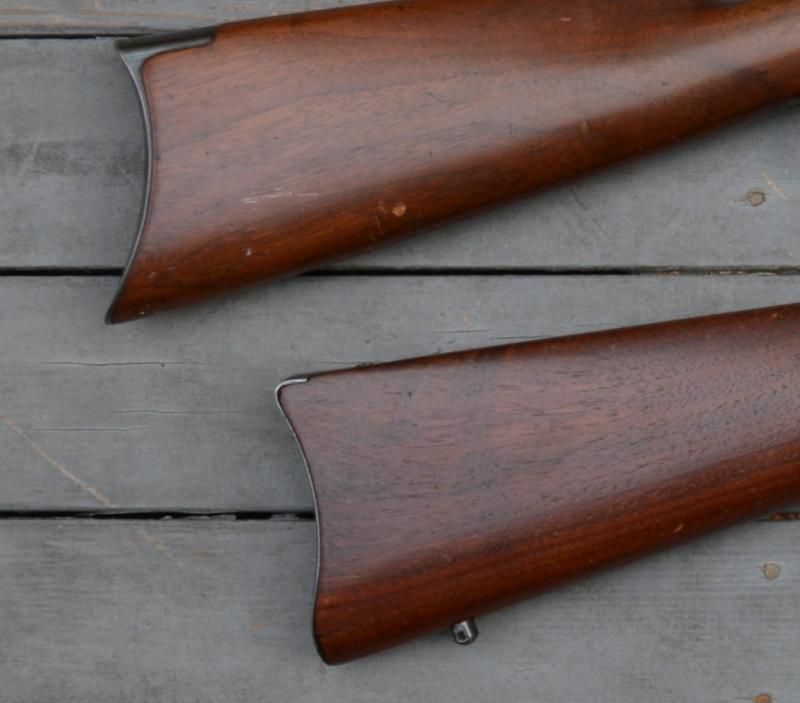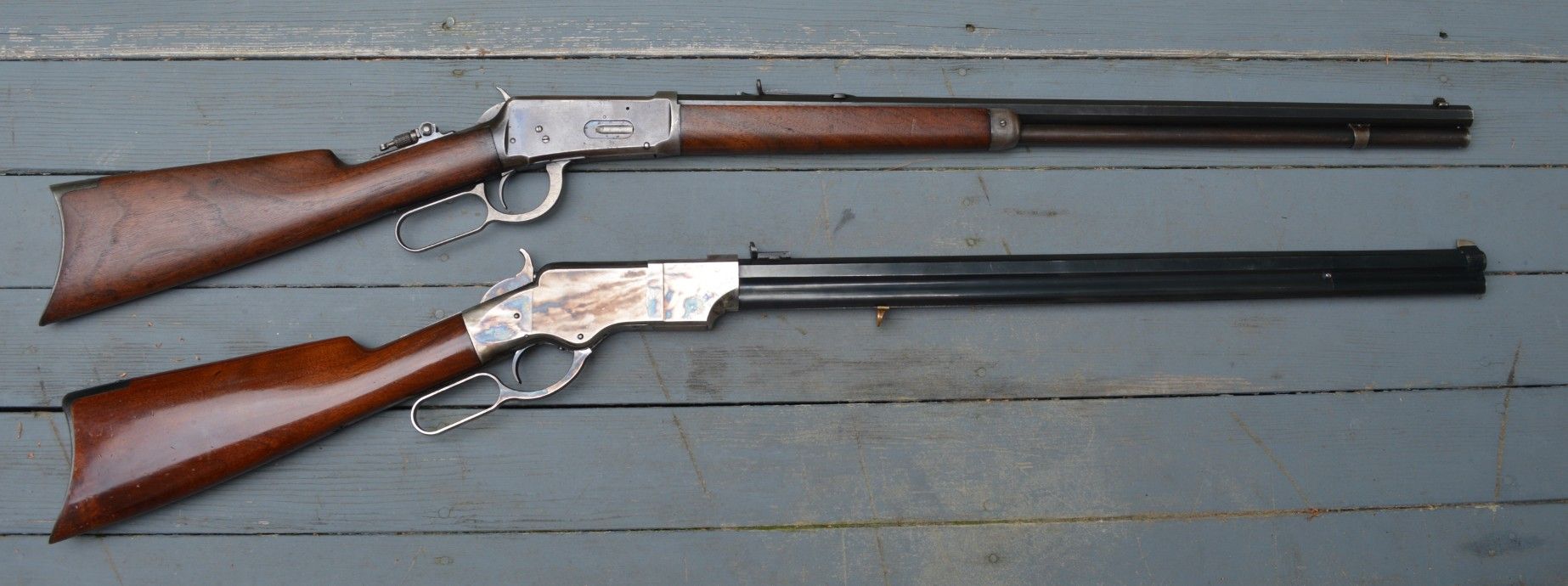Howdy Again
No matter whether you decide to buy the 1873 or 1892, give some thought to the configuration.
The Model 1892 at the top of this photo is of the rifle configuration. The one at the bottom is a saddle ring carbine. In the 19th Century, barrel length was not the defining feature that defined a carbine or a rifle. Winchester rifles had a fore end cap on the end of the fore end, and the magazine was hung under the barrel by a hanger dovetailed into the bottom of the barrel. But notice the shape of the buttstock. Rifles had a deeply curved crescent shaped buttplate. Twenty four inch barrels were standard, but special lengths could be ordered as short as twelve inches and as long as thirty inches. Carbine barrels were usually 20 inches long, but other lengths were available on special order. Carbines had barrel bands suspending the magazine below the barrel, and there was no metal at the end of the fore end. The butt plate of a carbine was piece of strap metal bent to shape, and the curvature of the butt was much less than that of a rifle.

Here is a close up of the rifle butt at top and the carbine butt at the bottom. The rifle butt plate was a casting, the carbine butt plate was a simple bent piece of metal.

My point is, if you don't know how to shoot a rifle with a crescent shaped butt plate, the points of the crescent can dig into the meaty part of your shoulder with recoil, and it can hurt. I learned a long time ago the proper way to shoot a rifle with a crescent shaped butt plate. The butt plate should be hiked farther out on the shoulder than most of us are used to. The points of the crescent should encircle the shoulder joint, one above and one below. That is the way these rifles were meant to be mounted. This way, the points keep the butt from sliding up or down, and the points will not dig into your shoulder. I don't own a rifle chambered for 45 Colt, all mine are either 44-40 or 38-40. These cartridges do not generate a lot of recoil, but if you place the points of the crescent on the meaty part of the shoulder, as most shooters are doing today, it can hurt, even with a mild recoiling cartridge like 45 Colt, 44-40, or 38-40. Not a week goes by that shooters on the SASS Wire don't ask where they can get a leather cover to go over the points of the butt plate because they do not understand how the rifle was originally meant to be shot.
Shooting a rifle with a crescent shaped butt plate may require a modification to your stance too. Generally, you will want to stand at about a 45 degree angle to the target, not straight on. The rifle will be slung more or less across your chest. And it is best to raise your elbow to bring the rifle up to your face, rather than hunching over to bring your face down to the rifle.
I can shoot my CAS rifles this way all day long and they never hurt from recoil. And I am shooting full house Black Powder loads, none of that 'cowboy ammo'.
Here is the model 1894 rifle and carbine I showed in a previous post. The 30-30 cartridge is not a powerhouse by modern standards, but it does recoil significantly more than a 44-40 or 38-40. But I had a great time at the range with that rifle the other day, placing the butt as I described. Although the rifle (and the carbine) gave me a pretty good wallop, neither hurt to shoot.
Many years ago I had a Model 1894 with a barrel cut down to 20 inches and the magazine cut to half length. It had the standard crescent shaped rifle butt. I did not know then how to shoot it, and every time I pulled the trigger it hurt like the dickens as the points dug into my shouldere. I seem to recall I could only fire three shots before I had to quit for the day, it hurt so much. That rifle was stolen many years ago, but I wish I still had it now, since I now know how it should have been fired.
Notice the completely flat butt stock on this carbine.

Just for fun, here is the 1894 rifle with my replica 1860 Henry, chambered for 44-40. I can shoot it all day long and it does not hurt because I know where to mount the stock.

Probably the most popular rifle in CAS today is a 1873 Short Rifle. The barrel is usually 20" long, sometimes it is an octagon barrel. There is often a pistol grip on the wrist, and they usually have a crescent shaped butt plate. Usually chambered for 357 Magnum, but most CAS shooters shoot light 38 Specials out of them so they hardly recoil at all.
My point is, don't be afraid to buy a rifle with a crescent shaped buttplate, but be sure you understand the proper way to mount it. Uberti also makes several 1873 models with flat butt plates, some even have a rubber butt plate.
Decide what style you would like to shoot most.